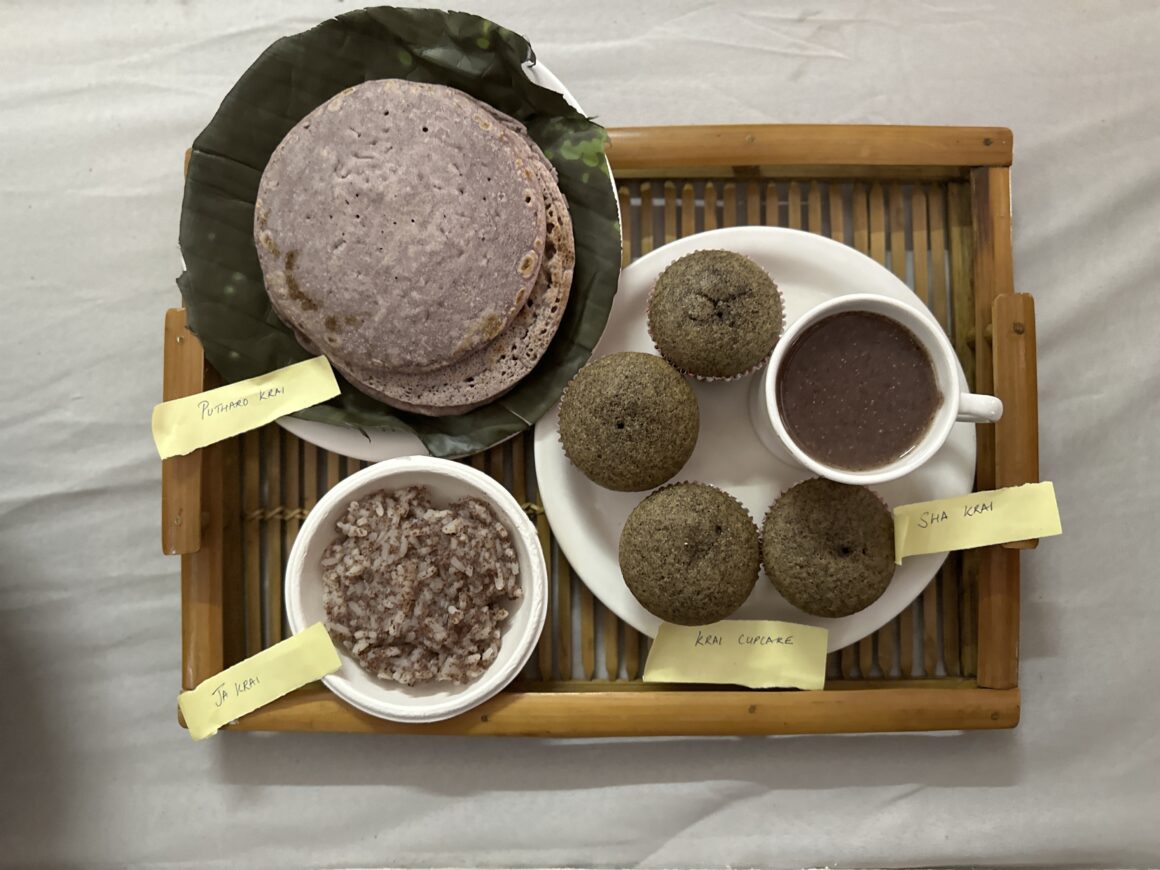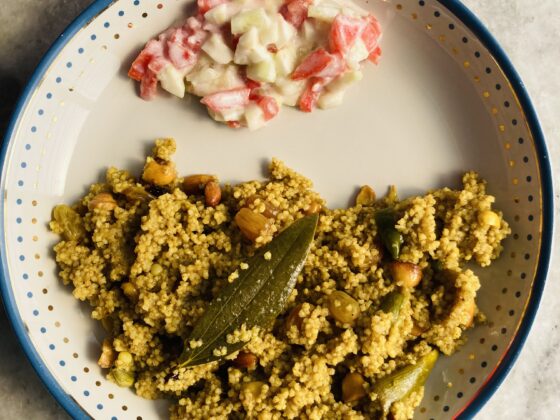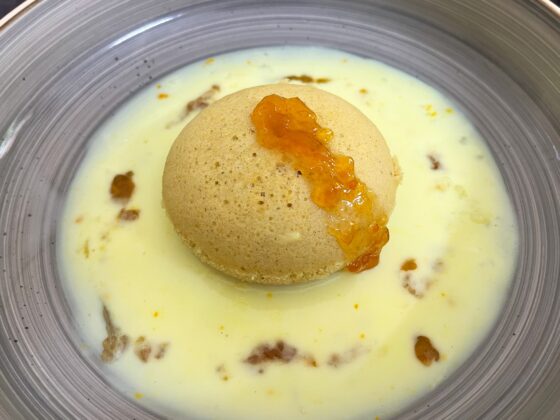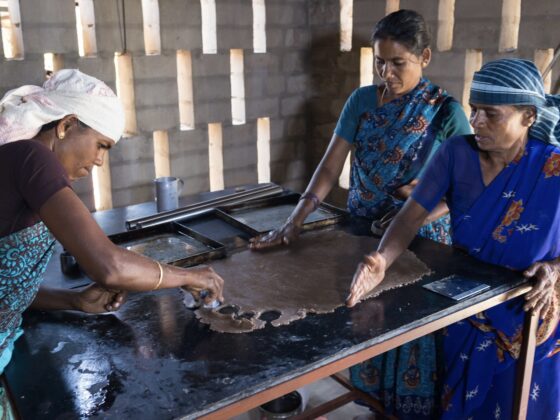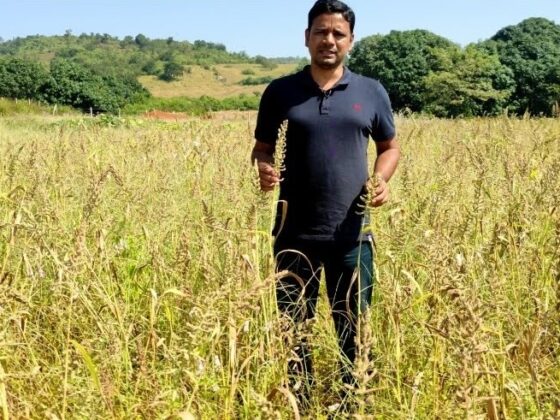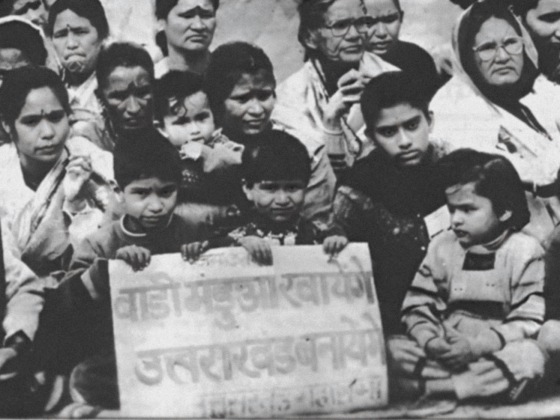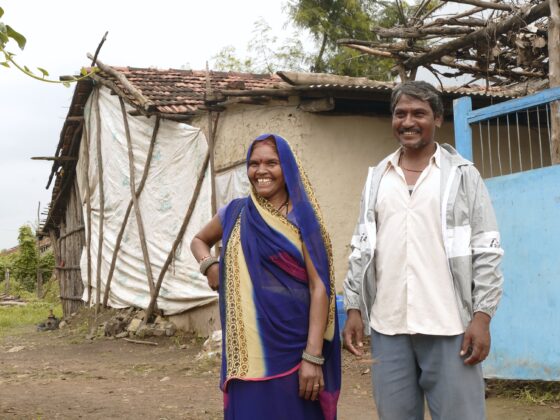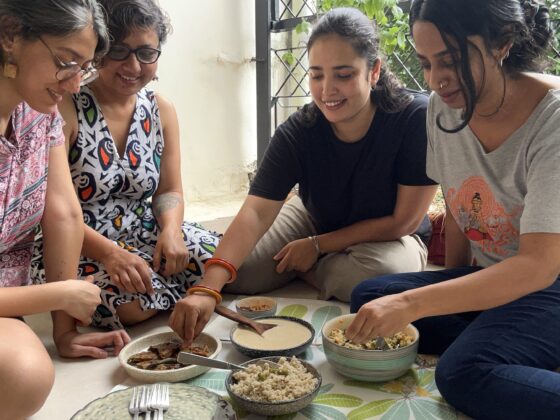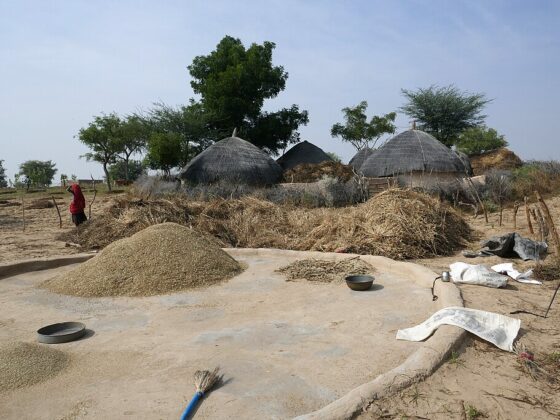Numerous efforts are being made across the country to revive millets, and promote its consumption. But what does it mean for farmers who grow these grains? Nidaphi Hynniewta speaks to millet farmers from Meghalaya.
In most homes in Shillong today, eating millets is quite unusual. Much like a forgotten dream, krai—the Khasi word for millets—are vaguely familiar, yet unknown to current generations when it comes to look and taste. While millets such as krai soh (foxtail millet), krai lon (finger millet), sohriew mynngaiñ (Job’s tears millet), and krai hhñiai (sorghum) are still integral to festivities in both the Khasi as well as Garo communities of Meghalaya, there is little indication of these being sold in local markets.
According to Bhogtoram Mawroh, a senior researcher at NESFAS (North East Slow Food and Agrobiodiversity Society), this is because millets were mostly produced for self-consumption and primarily used as fodder. “Millets were typically grown in one’s kper (house garden), never in wide plain areas,” says Bah Bhogtoram (Bah is a polite address for a male elder in Khasi). In fact, it is through NESFAS’s efforts that conversations around eating krai began to resurface in the 2010s.
Given the role that millets once played in the Khasi diet, people from the community are beginning to recognise the value of cultivating millets. “Millet is an important food crop, and until 30 to 40 years ago, it was grown in a handful of villages,” says Bhogtoram. “As far as I know, Khapmaw is the only village that has preserved millet seeds.”
In Meghalaya, the cultivation of millets was also closely linked to the jhum system, a traditional agricultural method popularly known as shifting cultivation. As people slowly moved to cultivating in their house gardens and orchards, and planting more profitable crops such as areca nut and broom, the cultivation of millet declined. “As you lose jhum, you will also lose millets. The farmers forgot the crops that are planted in the jhum areas,” says Bhogtoram.
Over the years, not only has the cultivation of millet and its seeds been lost, but festivals that celebrated the grains through song and dance have faded as well. Long Hai—a traditional weeding song—hasn’t been heard in the last 60 years. Referring to the documentary film Kings Have Their Resorts, People Have Their Songs, which explores this musical loss, Bah Bhogtoram explains, “In Syndai, the weeding of jhum areas would happen thrice a year, and it is the women who would carry out this task. During their breaks, they would brew beer out of millet to relax, and sing Long Hai as they weeded.”
To understand many of these cultivation practices, one needs to understand the topography of Meghalaya. The centre comprises plateaus that roll off to plains in Assam on the east and north, and north-west, and Bangladesh on the south and south-west. People on the borders who owned land typically planted millets in the hilly areas, and rice in the plains. Krai was therefore a food crop that people of the hills, mainly tribal communities, ate. It was perceived as food eaten by the poor.
These hills of Khasis and Jaiñtias were major millet cultivators until the 1970s. Now, through the support of NESFAS, custodian farmers from various districts in the state are starting to cultivate millet again. With this focus on reviving millets, perceptions around it are shifting too.
This year, NESFAS in collaboration with The Locavore, hosted an event—‘Celebration of Millet: An Indigenous Heritage of Meghalaya’—to commemorate the return of these traditional crops. The two-day affair in Shillong brought together millet growers and local chefs to create a spread of simple yet delicious millet dishes under the guidance of ChefTZac—recipes that would be easy for local communities to adopt.

To better understand the reintroduction of millets in Meghalaya, we spoke to a few millet growers—from Jaud and Samanong—who attended this event. Two of them had arrived much earlier than the rest, and were scouring the venue for a plug point to charge their phones; a raging thunderstorm the previous night meant that there had been no electricity in the village.
Phirinda Lyngdoh Lyngkhoi and Aiwanbok Marbaniang are from Jaud, a village nestled in the hillocks of East Khasi Hills District, about an hour from Shillong. Jaud’s landscape largely comprises hills and rolling grasslands, making bund cultivation prevalent.
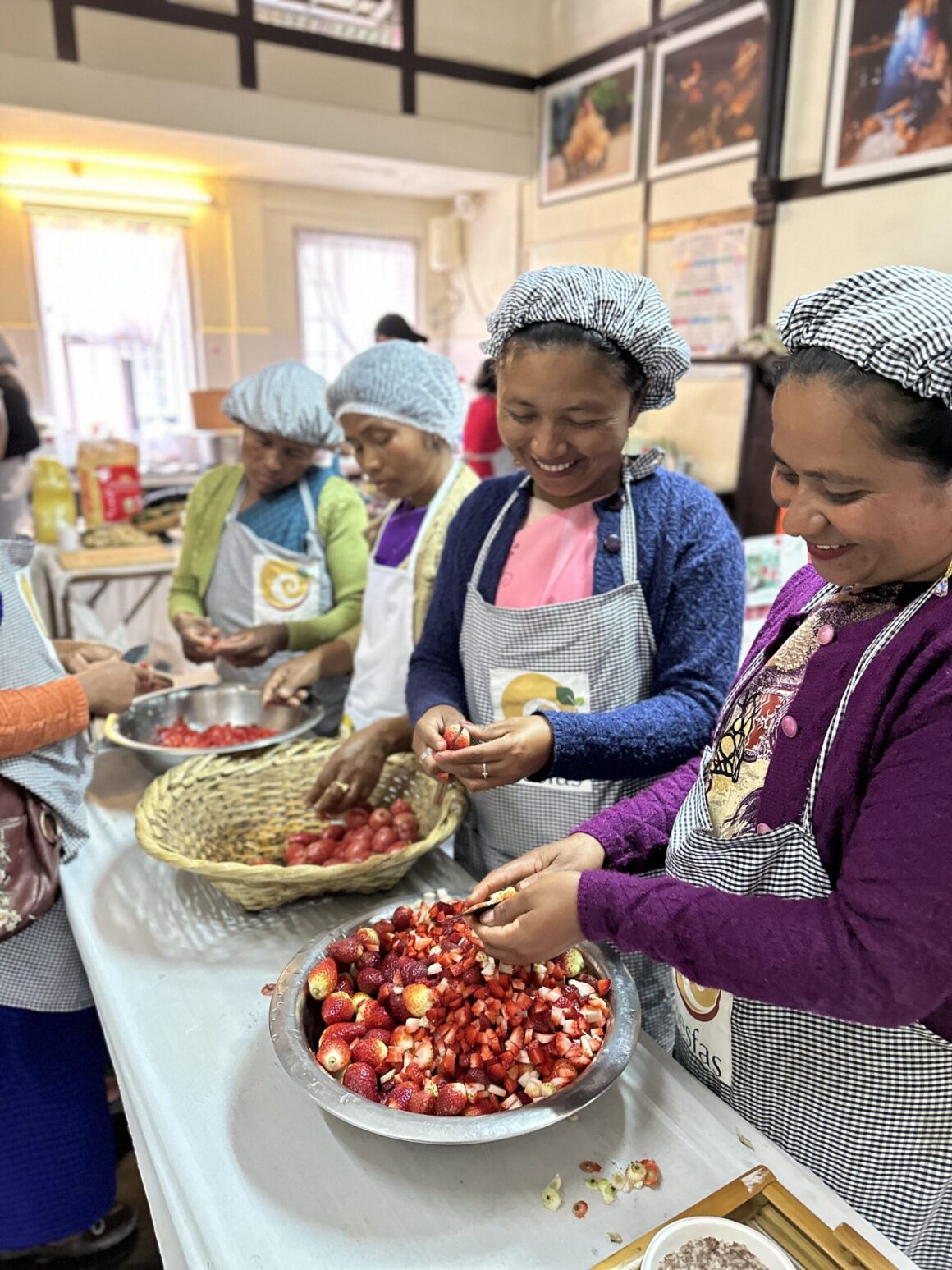
Read edited excerpts from an interview with them, as translated by Nidaphi Hynniewta from Khasi:
Could you tell us a little about your experience with farming millets?
Phirinda: Millets are fairly new to us. Before last year, we would cultivate only rice; you wouldn’t find any millets growing in farms. But from 2022, with intervention by the Social Service Centre—a grassroots organisation in Shillong focussed on improving livelihoods, food security, and health—we began to cultivate millets. Only a little bit, but even that produced quite a lot, a surplus we could sell. Aiwanbok and I cultivate on the same field, the land we own.
What is the process of cultivating millets?
Phirinda: So, for finger millets, we start sowing seeds in April. By June, we carry seedlings to the fields and in November, we harvest the grain. After that, we sun dry the produce for a month or so, and then thresh it. Threshing—the process of separating grain from husk—can only be done after the produce has been dried.
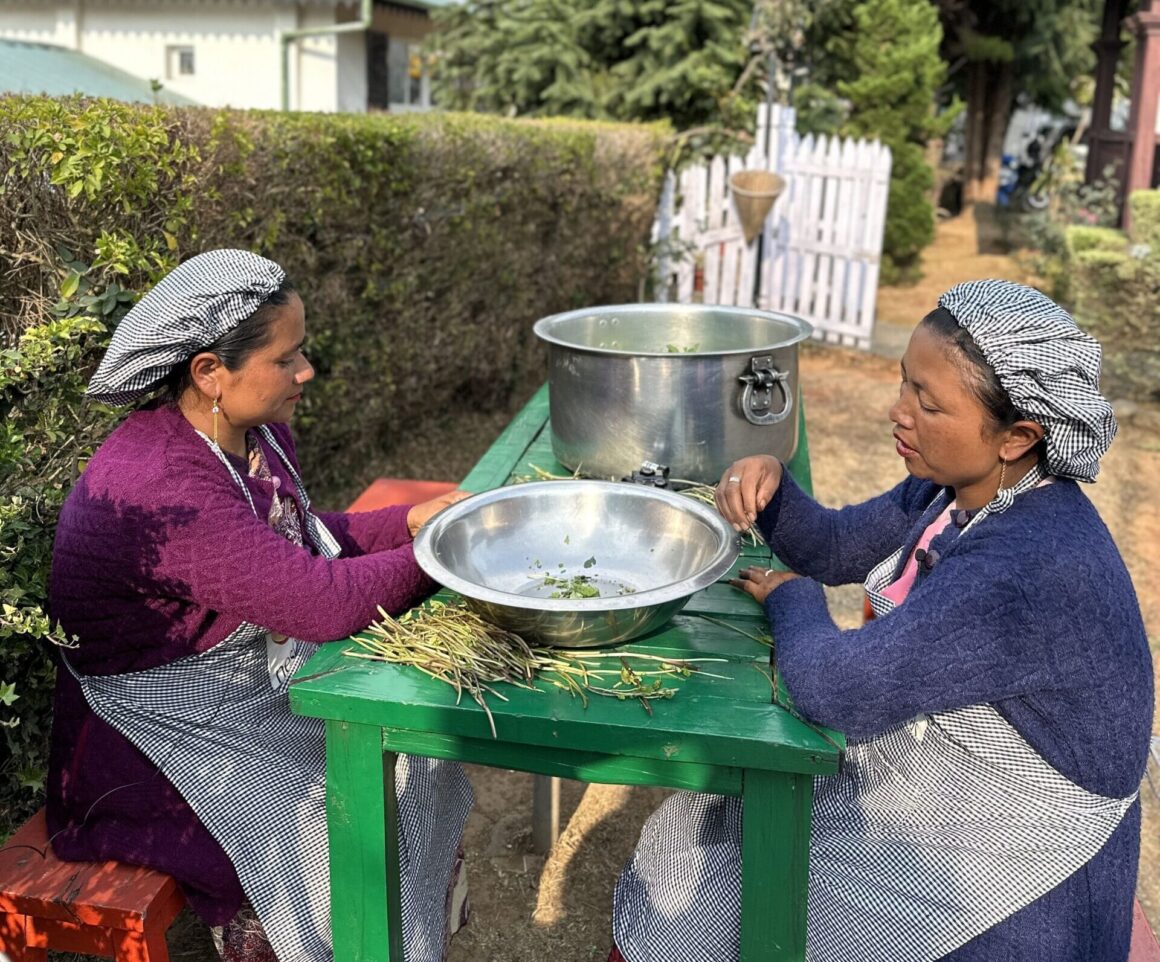
Did your parents also farm millets?
Phirinda: No, our parents never cultivated millets. A recent research study revealed that our great-grandmothers did cultivate millets. But, we don’t know what happened after that, the seeds just seem to have disappeared. Now, through millet seed distribution efforts by grassroot organisations, we are able to plant millets again. Cultivating krai is actually quite easy and cost-effective since we don’t have to spend much on manure and medicinal treatment for the crops.
Did you learn farming from your parents?
Phirinda: My grandmother and mother had passed away. I learned farming by observing other people. I never knew when to sow, or when to harvest until much later in life.
What does an average day of farming look like? Has it changed over the years?
Phirinda: You know, an average day in farming differs from time to time. It depends on the season, and the crop’s routine. For example, when we have to plant potatoes, we start planting early in the morning, carry the manure in the afternoon, and plough the fields and plant seeds simultaneously until sundown.
How has farming in Jaud changed over time, in terms of processes, and what people like to grow?
Phirinda: The process of farming has changed quite a bit over the years. Earlier, when the land was fertile, we never really had to use much manure. Now, we mix cow dung with heaps of dried rice grass and a bit of medicine. This nourishes the land for farming.
With the coming of new farming projects and support from different organisations, we have been able to diversify what we grow. For example, we are now able to plant oyster mushrooms, which we have been able to sell, too. Farming mushrooms is easy for us, especially as parents of young children. Mushrooms don’t require us to go to the fields as much.
In your experience, what are the challenges of farming millet, and what are the benefits?
Ainwanbok: I haven’t found farming millets hard at all.
Phirinda: I agree, especially now that we have seedlings. It was hard only at the beginning when we couldn’t find seeds. As for the benefits, farming millets has helped us earn more since their price in the market is on the higher side.
Aside from farming, are you familiar with millets? For example, have you cooked millets before?
Phirinda: No, we are not used to cooking it. We hear that millets have to be finely ground, which is difficult to do, especially with a mortar and pestle. We would need a machine, like a grinder or something, which makes the whole process of cooking it more tedious.
Ainwanbok: In fact, this is our first time farming millets as well. It’s very new to us.
Phirinda: Recently, however, we have started eating millets a little more. Not at home, since cooking it is difficult for us, but we have tasted millet cakes at the monthly market organised by the Social Service Centre office. At these meets, farmers get to taste different millets, and learn about the grains.
Have you heard of anyone else in your village who eats millets?
Phirinda: I don’t think there is anybody who eats millets.
Ainwanbok: We are the first ones to have started. My mother used to tell me that earlier generations used to farm finger millet to feed the cows. It’s strange, but I don’t recall any stories of farming millets to feed people!
Do you think that you will cook millets for your kids, in the future?
Phirinda: If parents lead, children will follow. Even if I don’t have a mother anymore, there are some who know how to cook with millets. So, if they can teach us how to cook with millets, then we could pass it on to our children.
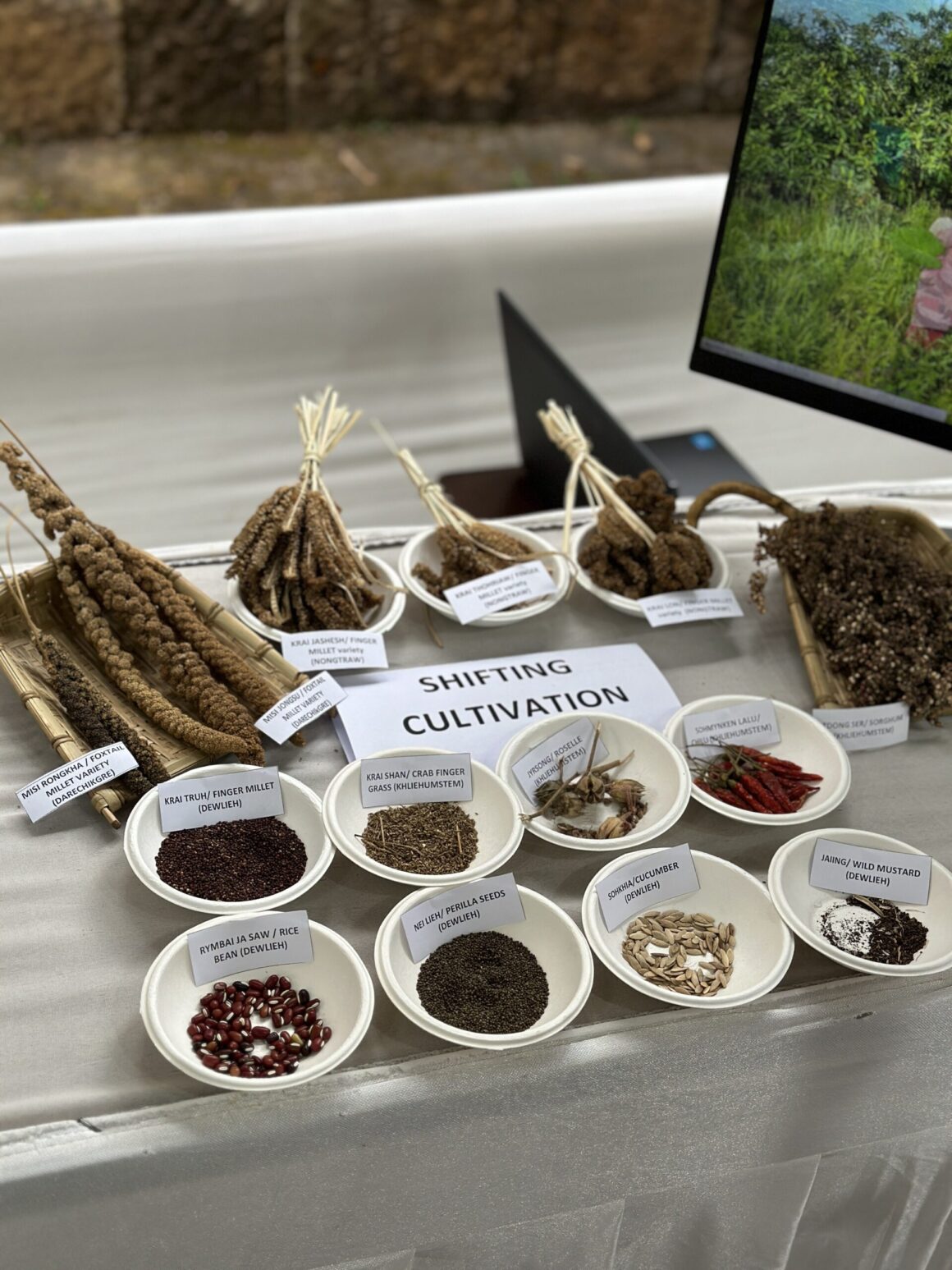
My mother used to tell me that earlier generations used to farm finger millet to feed the cows. It’s strange, but I don’t recall any stories of farming millets to feed people!
Amidst the group of millet growers, most of whom were women, there were two male farmers—Handsome Suting and Pynshai Langshiang. Bah Handsome and Bah Pynshai had travelled from Samanong, a village in Amlarem, West Jaiñtia Hills, to attend the Millet Festival. As Bah Pynshai took a while to open up, Bah Handsome filled us in on his experiences with farming millets in Samanong.
With a larger forest cover than Jaud, Samanong edges on plateaus that roll off to the plains of Bangladesh. Well disposed to millet cultivation, jhum practice ceased in the forest area of Samanong with the arrival of areca nut and broom in the early 2000s. Broom grass, a crop that has monopolised the hills of Samanong, is more profitable than the food crops.
Could you tell us about millet farming in your village?
Handsome: It is believed that in the olden days, millet farming was quite common. The crop yielded well— almost about 50 sacks (kilos) per kilo of seed. But when rice was introduced, millet farming dwindled in our village. Around 2014, when it had nearly stopped, is when NESFAS came to our village to help revive the crops. Now, more organisations have joined this effort, and we’re all working together.
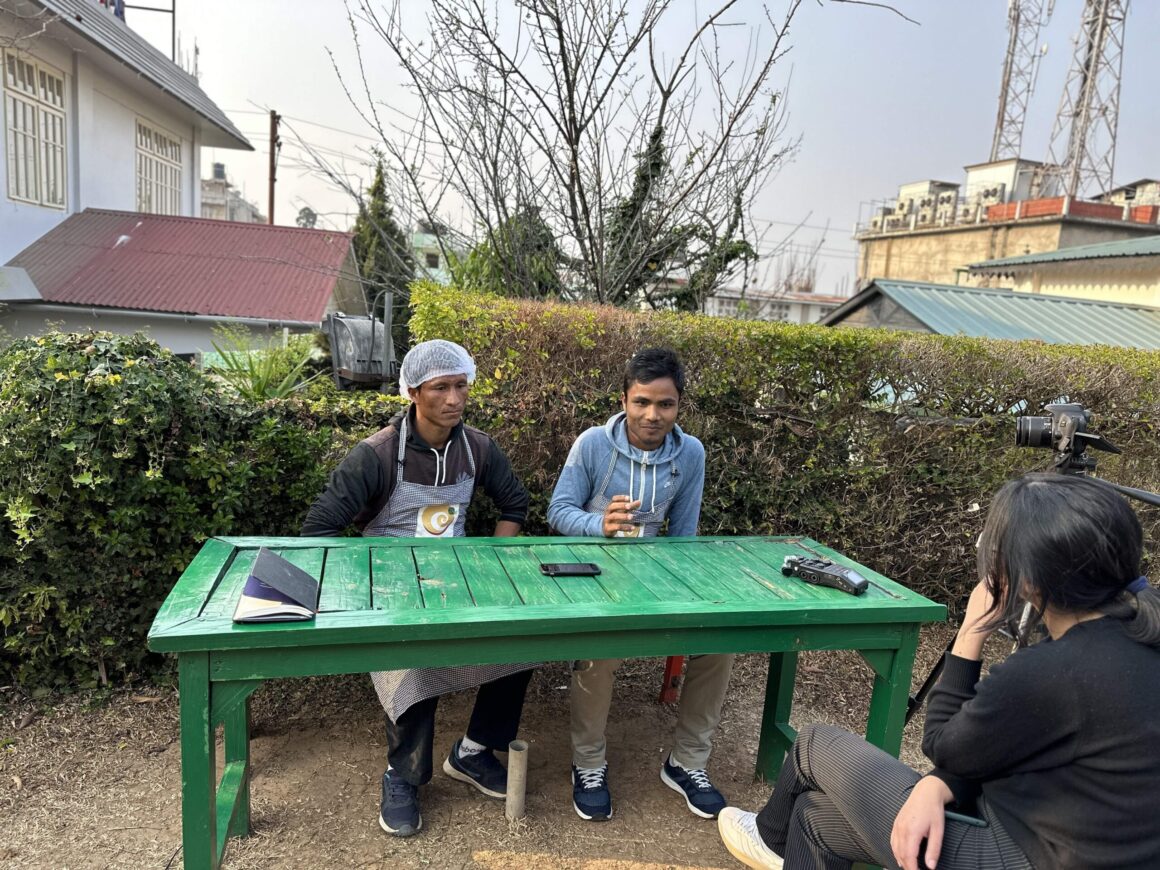
What has been your experience working with millets?
Handsome: We usually plant millets after planting rice. Millets are planted close to forests, for which we clear trees and bamboo in the area. The trees are then left to dry, and burned soon after. Back in the day, when previous generations farmed millet, their process was a little different. After sowing the seeds, they would use goats to stamp it in. We don’t do that anymore.
In these areas, where the mud is soft, akin to that of a garden, we sow the millet seeds after just a bit of cleaning. We plant the seeds in the fifth or sixth month, and harvest them in the eighth month. Cleaning the harvested millet is quite difficult and demanding! We have to ensure that not one strand of grass remains in the produce, or else it will all be thrown away. The only kind of crop that can be planted alongside millet is rymbai ja (beans). In the 12th month, when the grain has properly dried, we thresh it. We store the millets in sacks, only removing them for eating.
And how would you prepare millets for eating?
We first grind the grain in a mortar and pestle, and further grind it in what we call a mookynrut (stone slab) in pnar (one of the dialects spoken in Samanong). After grinding, the grain is ready for cooking. In the cooking process, we start by cooking the rice, and add the finely ground millet just before the rice is fully done. We mix it in until it’s properly cooked.
Did your parents ever eat millets?
Handsome: Yes! When our parents were young, they would mostly consume millets. It was only later that rice took over their diets.
In your village, are there many of you who still eat millets, and are there many people buying it? Is there a market for selling and buying millets?
Handsome: Even if we cook millets and try to sell it in the form of cakes, for example, there is little demand for it. We rarely get orders. In a small village like ours, selling both cooked and uncooked millet is proving to be a challenge. There is a need for more marketing around millets, which is currently too little.
Would you perhaps know why that is?
Handsome (after a long pause): You see, we are from a village. We are not sure about how to market millets.
What do you like about farming millets? Have millets been productive for you?
Handsome: Out of all the crops we farm, millets are the only ones that can withstand the climate and pest destruction. The only difficulty is rats; they love eating millet.
How does this farming of millets work? Do you plant them individually, or in groups?
Handsome: So, largely, plantings of millets is done by individual households. But self-help groups in the village also plant millets, as a collective. They hold meetings to discuss farming, and make decisions together about when to plan, cut, and clean.
Out of all the crops we farm, millets are the only ones that can withstand the climate and pest destruction. The only difficulty is rats; they love eating millet.
How many sacks of millet would you say you’re able to produce?
Handsome: Since there isn’t much of a market for millets, we don’t plant much. Our forefathers would say that they would plant about a kilo, and reap 50 kilos or so.
Do you eat millets every day?
We eat it sometimes, but not daily. It is mostly old people who eat it with rice.
Do you like the taste of millets?
Handsome: It’s hard to say because once rice came into the picture, everyone just started to eat more rice, so the preference for rice grew. Now, with the coming up of many different collectives and self-help groups we’re discovering different ways of cooking millets, one of them being baking cakes. So, we are readjusting to the taste of millets!
Nidaphi Hynniewta is a freelance writer with an inclination for art and culture. She also organises events in Shillong. In her spare time, she finds herself experimenting with photography and studying folklore.
We would like to thank Gratia Dkhar, Senior Associate of Program at NESFAS, for being so generous with her time and knowledge.

This article is part of the Millet Revival Project 2023, The Locavore’s modest attempt to demystify cooking with millets, and learn the impact that it has on our ecology. This initiative, in association with Rainmatter Foundation, aims to facilitate the gradual incorporation of millets into our diets, as well as create a space for meaningful conversation and engagement so that we can tap into the resilience of millets while also rediscovering its taste.

Rainmatter Foundation is a non-profit organisation that supports organisations and projects for climate action, a healthier environment, and livelihoods associated with them. The foundation and The Locavore have co-created this Millet Revival Project for a millet-climate outreach campaign for urban consumers. To learn more about the foundation and the other organisations they support, click here.
